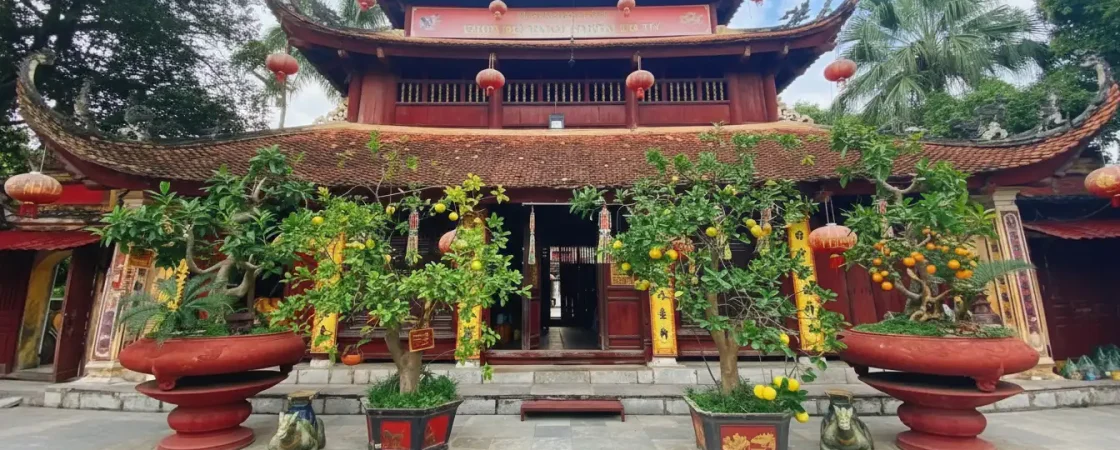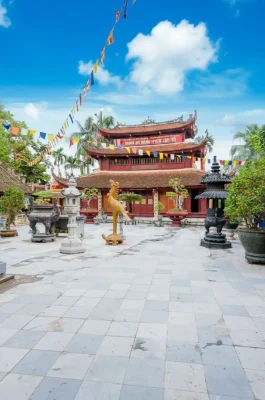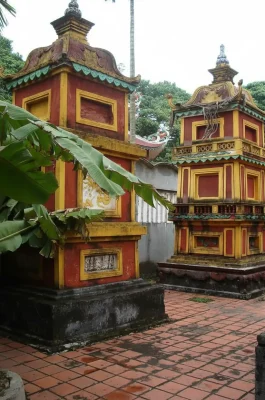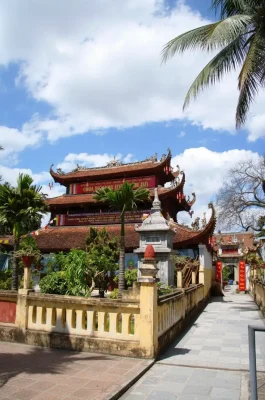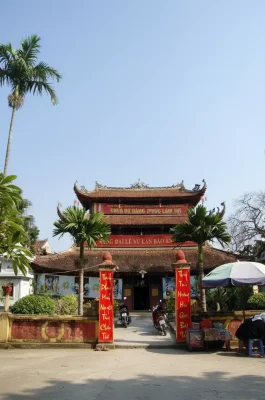Du Hang Pagoda (Chua Du Hang), formally known as Phuc Lam Tu (The Blessed Forest Pagoda), is one of the oldest and most significant temples in Hai Phong City. Located in the busy Le Chan District, this ancient Buddhist complex offers visitors a tranquil escape and a deep connection to the city’s spiritual and historical roots, having been a central religious and political site for centuries.
History and Significance
Ancient Origins: The pagoda’s history is believed to date back to the Tien Le Dynasty (980-1009 AD). It was a major Buddhist center, linked to the revered Truc Lam Zen sect founded by Emperor Tran Nhan Tong during the Tran Dynasty (1225-1400).
Restoration and Expansion: The temple has undergone several renovations, notably in 1672 and 1899. The current architecture largely reflects the style resulting from these later restorations.
National Relic: In 1986, Du Hang Pagoda was recognized as a National Historical and Cultural Relic (Di tich lich su van hoa cap Quoc gia), cementing its importance to the nation.
Revolutionary Role: During the 20th century, the pagoda served as a meeting place for local revolutionary activities and notably hosted a large memorial service for the patriot Phan Chu Trinh in 1926.
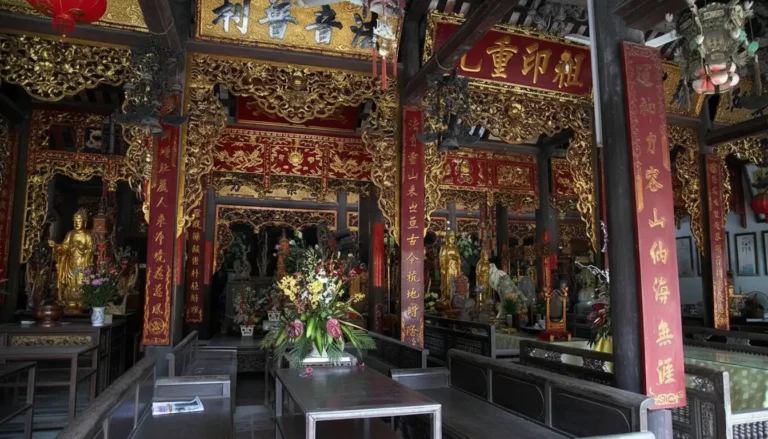
Architecture and Artifacts
Du Hang Pagoda is an impressive example of traditional Vietnamese Buddhist architecture, built in the shape of the Chinese character “Dinh” (丁), featuring multiple interlocking buildings.
Layout: The complex includes the Tam Quan (Triple-arched Gate), a large Bell Tower (Gac Chuong) with three curved roofs, the Main Buddha Hall (Chinh Dien), and the Ancestral Shrine (Nha To).
Sculpture and Carvings: The main hall contains numerous valuable artifacts, including large lim wood columns, gilded couplets, horizontal lacquered boards, and many intricately carved Buddha statues and Guardian deities in the style of the Nguyen Dynasty.
Invaluable Relics: Among its most precious possessions are ancient copper bells and gongs, a set of Agama Sutras (Kinh A Ham) used for Buddhist teachings, and various decorative ceramic art pieces.
The Garden and Stupas: The spacious, shady grounds feature a tranquil garden with a pond (often containing turtles and fish) and a cluster of ancient stupa towers (Vuon Thap) housing the remains of founding abbots and Zen masters.
Practical Visitor Information
| Feature | Details |
|---|---|
| Location | 121 Du Hang Street, Ho Nam Ward, Le Chan District, Hai Phong City. |
| How to Get There | Located centrally, approximately 2 km southwest of the Hai Phong City Center/Municipal Theatre. Easily accessible by taxi, motorbikes (xe om), or a short drive. |
| Opening Hours | Generally 7:00 AM–6:30 PM daily (Confirm locally for seasonal variations). |
| Entrance Fee | Free (as it is an active place of worship). Donations are appreciated. |
| Best Time to Visit | Early morning for serenity or during the 1st or 15th day of the lunar month when the temple is bustling with local worshippers. |
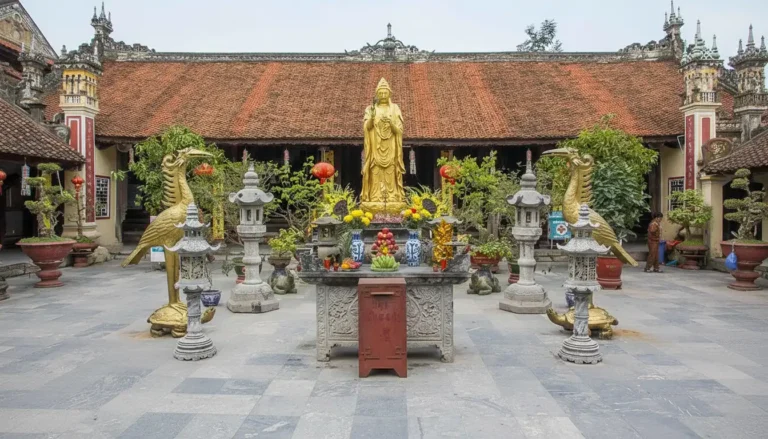
Tips for Visitors
Dress Code: Always wear respectful attire that covers your shoulders and knees when visiting the temple grounds.
Photography: Photography is usually permitted in the courtyards and outside, but be respectful and avoid taking photos of monks or individuals praying without permission.
Local Insight: The pagoda’s location on Du Hang Street makes it easy to combine with a visit to the nearby Hang Kenh Communal House (Dinh Hang Kenh) for a full cultural experience.
